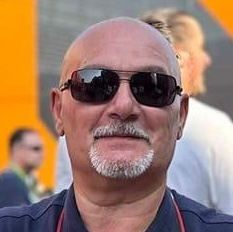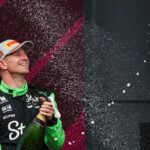Alta Vision Network is more than just a tech company – it’s a digital workshop of the future, where each project takes shape to inspire, explain, and engage.
There’s a place, nestled between creativity and innovation, where technology isn’t just a tool – it becomes a language. A language capable of transforming communication into experience, learning into immersive journeys, and information into emotional storytelling. This is the world of Alta Vision Network, an Italian company that speaks the language of the future.
Visiting their headquarters feels like stepping into a buzzing ideas lab. Augmented reality experiences are designed here, virtual environments are shaped, and audiovisual content emerges that appears to have come from a futuristic film set. All of it with one clear goal: to make the invisible visible, placing the user at the very heart of each narrative.
Alta Vision Network is not a traditional production house – it’s a bridge between the real and the digital. The proof lies in the demanding sectors they serve, including motorsports, aerospace, education, pharmaceuticals, and cultural heritage. One example? The Virtual Driving Courses are designed for major training centres and Ferrari GT, featuring photorealistic 3D environments, VR headsets, and simulations that blur the line between training and entertainment.
Then there’s another equally strategic front: storytelling. Through series like Racing Files, Alta Vision Network crafts truly immersive narratives, blending archival footage, 3D animations, and original interviews to tell stories that leave a mark.
But what truly sets this company apart is not just its technical excellence. It’s the ability to tailor every project, building experiences that go beyond the wow effect – they stick with you. With a vision that harmonises aesthetics, content, and innovation, and a team capable of speaking with the same enthusiasm to a luxury brand or a research institute.
This is Alta Vision Network: a creative hub where every pixel is designed to move you. A place where communication means experimenting, designing, and imagining.
We sat down with Fabiano Vandone, the founder and owner of Alta Vision — a cutting-edge technology hub based in Alessandria, Italy — to learn more about the company’s mission and role in shaping motorsport branding.
How did you go from being a driver to becoming an entrepreneur in immersive communication?
After I stopped racing, I began collaborating on technical content for Formula 1, thanks to a few respected motorsport journalists. I quickly realised that if I was going to focus on vehicle prototype technology, I needed a way to present it in a simple and effective manner. This was back in the ‘90s, and even then, F1 was already extremely complex. I began with basic 2D sketches, which eventually evolved into 3D representations.
So, using 3D came from a practical need?
Exactly. If I want to explain what a rear wing is or how flame propagation works in a super-square engine, I need to show it visually. Words alone aren’t enough. I’ve always sought tools to make technical content more accessible, particularly for motorsport enthusiasts without an engineering background. That’s the core of everything: bringing high technology closer to those who want to understand it.
In short: making the unseen visible?
Yes – but with an added layer of complexity. It’s not just about showing a technical detail. You also have to explain its practical consequences, the cause-and-effect chain. If a gearbox flexes, the car can lose ride height and damage the skid block; I have to demonstrate the entire process. That’s why 3D is such a powerful storytelling tool. I don’t just show – I explain.
Was that the intuition that led to the founding of Alta Vision Network?
Exactly. Alta Vision was born from a clear need: to create a space where everything could be developed and tested in-house. No rented studios, no outsourcing. That way, we can prototype continuously, shorten development times, and evolve a graphic language that really works. Today, we even use AI for audio and voice-over production – everything is done internally and instantly.
How would you describe Alta Vision Network to someone who is unfamiliar with it?
It’s a micro hub for immersive communication technologies, a place of development and research. It started around Formula 1, which remains the most complex context in terms of dynamics and effects to visualise. But today, Alta Vision also works in pharmaceuticals, cultural institutions, and museum virtualisation. The goal remains the same: to turn complex content into understandable experiences, utilising advanced digital tools tailored to each audience.
READ MORE: Robin Fenwick: F1 is the best sport for commercial sponsorship
What did you bring from your racing career into this world?
Curiosity, above all. On the track, communication with your engineer is fast, precise, and based on technical insights. Bringing that mindset into storytelling means aiming for clarity, synthesis, and efficiency. It’s not about being flashy – it’s about making people truly understand what’s happening. Today’s fans don’t just want to know who won – they want to know why.
Is there one project that best represents Alta Vision?
Yes – the Petronas Iona production. We brought together graphics, dynamic sets, augmented reality, molecular modelling, and sound design. It’s the perfect synthesis of what we do, presented in Asia and translated into multiple languages. But I also see our museum projects as hugely meaningful: making cultural spaces accessible, interactive, and even available remotely, from your smartphone.
What’s next for Alta Vision?
Two directions. First, the ongoing development of VR and AR content is increasingly integrated and mobile-friendly. Second, a selective approach to innovation: we don’t chase every trend, but focus on what actually improves our production and helps our clients, like Ferrari or Marelli. The market is full of flashy updates, but only a few really matter. That’s where we invest.
If you had to choose an image to represent Alta Vision, what would it be?
A Formula 1 car in augmented reality, fully open, on the starting grid. Because F1 represents the pinnacle of technical complexity, and AR is the language that lets us explain it. A child can explore the seatbelts, while an adult lifts the hood to see the engine. It’s a piece of content that’s customizable and meaningful to everyone.
What makes you most proud of your work?
I wouldn’t call it pride – the world has changed too fast. Everything we did before 2019 is already obsolete. But I’m proud of having built a unique model of work, where even big companies come back to us because they know what they’ll find: cross-disciplinary expertise, not just graphics. We speak the same language as engineers, developers, and designers. I’m also proud of our team: we’re small, highly specialised, and our approach simply can’t be replicated elsewhere. That’s why we keep growing.









